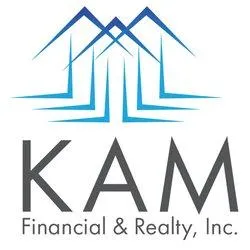
Mortgage Bailout Programs in California: What Homeowners Need to Know
What Is a Mortgage Bailout and How Does It Work?
A mortgage bailout is a financial assistance program designed to help homeowners avoid foreclosure when they struggle to make mortgage payments. In California, these programs can come from government initiatives, lenders, or private financing solutions. They typically involve loan modifications, refinancing, or direct financial aid.
Key Features of Mortgage Bailouts:
Loan Modifications: Adjusts loan terms to reduce payments.
Refinancing Options: Replaces an existing mortgage with a new, more affordable loan.
Government Assistance: Programs like the California Mortgage Relief Program offer aid to struggling homeowners.
Private Lender Solutions: Some lenders provide bailout loans for those who don’t qualify for traditional refinancing.
For homeowners in distress, understanding these options can be the first step toward financial stability.
Who Qualifies for a Mortgage Bailout in California?
Not everyone qualifies for a mortgage bailout. Lenders and government programs assess eligibility based on:
Financial Hardship: Job loss, medical expenses, or economic downturns.
Loan Status: Some programs require the loan to be delinquent, while others help prevent delinquency.
Equity Position: Home equity can impact refinancing or modification options.
Debt-to-Income Ratio: Lenders check if a homeowner can sustain modified payments.
California homeowners can check their eligibility through lenders or state programs like the California Mortgage Relief Program.
What Government Programs Offer Mortgage Bailouts in California?
Several government mortgage bailout programs exist to help Californians facing foreclosure:
California Mortgage Relief Program: Offers grants to cover missed mortgage payments.
FHA and VA Loan Modifications: Adjusts loan terms for FHA and VA borrowers.
Home Affordable Modification Program (HAMP): Helps homeowners lower monthly payments.
USDA Home Loan Assistance: Provides options for rural homeowners.
Homeowners can also explore FHA refinance options to improve their financial situation.
Can You Get a Mortgage Bailout with Bad Credit?
Many mortgage bailout options are available even if a homeowner has bad credit. Lenders and government programs may still approve assistance if:
The homeowner demonstrates consistent income despite past hardships.
The property has sufficient equity to secure refinancing.
The homeowner is willing to enroll in a financial counseling program.
For alternative financing solutions, bank statement refinance loans may be a viable option. Learn more here.

How Do Private Lenders Help with Mortgage Bailouts?
When government programs or traditional lenders deny assistance, private lenders offer mortgage bailout loans with different approval criteria. These include:
No-income verification loans for self-employed borrowers.
Hard money loans based on property equity rather than credit.
Bridge loans that provide short-term financial relief.
If traditional refinancing isn’t an option, consider exploring DSCR refinance as an alternative.
What Are the Risks of Mortgage Bailout Loans?
While a mortgage bailout can be a lifeline, there are risks:
Higher Interest Rates: Private lenders often charge more.
Longer Loan Terms: Loan modifications can extend repayment periods.
Potential Scams: Homeowners should beware of fraudulent "foreclosure rescue" companies.
Equity Loss: Some options may reduce home equity.
Always work with reputable lenders and seek professional advice before committing.
Can Refinancing Be a Better Option Than a Mortgage Bailout?
For some homeowners, refinancing might be a smarter choice than a mortgage bailout. Benefits of refinancing include:
Lower interest rates for qualified borrowers.
Cash-out refinance to pay off other debts.
Shortened loan terms for faster equity build-up.
Check out conventional refinance options to see if they fit your needs.
How Do You Apply for a Mortgage Bailout?
Applying for a mortgage bailout in California involves:
Assessing financial hardship and gathering proof of income.
Contacting your lender to explore modification options.
Applying for government programs like the California Mortgage Relief Program.
Exploring private lender solutions if traditional options fail.
Consulting with a mortgage expert to compare bailout vs. refinancing options.
You can start the process by scheduling a consultation here.
How Long Does It Take to Get Approved for a Mortgage Bailout?
Approval timelines vary based on the lender and program.
Government programs: 30-90 days.
Loan modifications: 60-120 days.
Private lenders: 2-4 weeks.
Delays can occur due to incomplete applications or lender backlogs. Homeowners should act quickly to avoid foreclosure.


